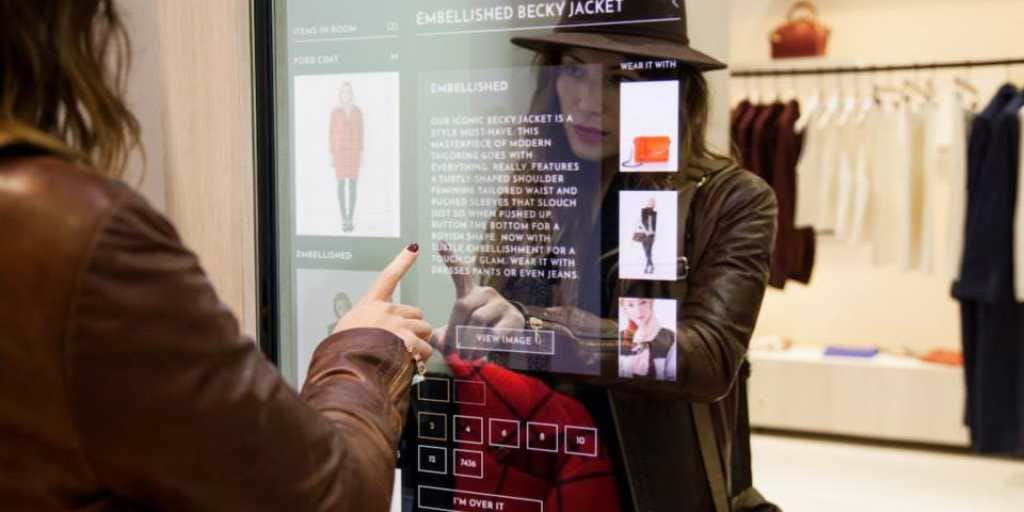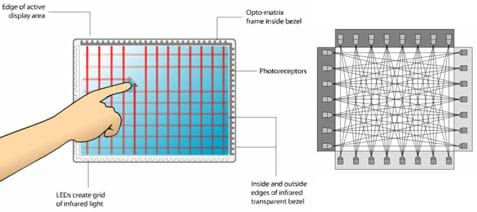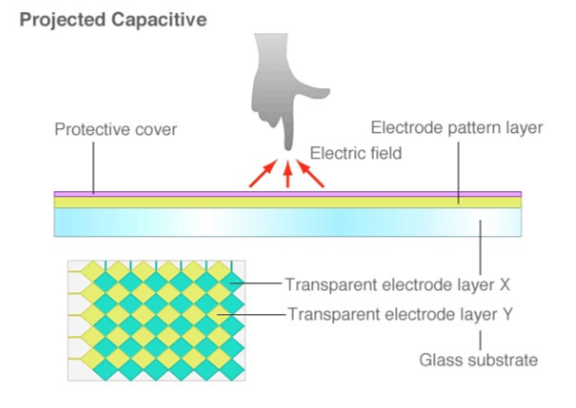Knowing the Differences in Touchscreen Technology
We all expect to have information at our fingertips these days, whether it’s on our mobile phones, our tablets or computers. Touch screens are all around us and they are becoming extremely commonplace.

It’s amazing how quickly touchscreens have come from a technological fantasy to something so widespread that it’s now considered standard. We only have to look at how much the mobile phone has advanced over the past decade to see how fast technology is advancing.
But it’s not just mobile phones that use this technology, it is all around us at ATMs, mall kiosks, ticket vending machines, even ordering your food at McDonald’s. Touch panels are a convenient and easy way to interact.
So are all touch screens the same?
The answer to this question is NO. There are three different types of touch technology, however where and how you intend to use your screen will determine which technology works best for you.
IR Touch
Infrared touch is mainly used on large digital displays as it does not require sensors directly on the glass. It uses IR (infared) emitters and receivers to create an invisible grid of light beams across the screen, basically forming a grid (x and y points) to pick up where the user’s finger is touching.

This technology can only be used on a flat screen. It is highly durable and ensures the best possible image quality. Perfect for large touchscreen help kiosks, exhibition stands and trade shows.
Capacitive Touch
This type of touchscreen technology is commonly used in smartphones. It consists of an electrically charged layer that is placed on a glass panel. As the human body is also an electrical conductor, touching the surface of the screen results in a loss of charge. The loss of charge is then measured by circuits and the change in capacitance is calculated, thus determining the location.

These screens are durable and can be activated wearing gloves so perfect for the food/medical industry. They can also be used as point of sale units and vending machines. Very little pressure is required on this screen so it is good for swiping too. The screens have great optics and have good resistance to surface contaminants such as dust, oil, grease, and water droplets.
Optical Sensor
The optical sensor is perfect for turning an LED wall into a touchscreen. The optical sensor converts light rays into electronic signals. It measures the physical quantity of light and then translates it into a form that is readable by an instrument. An optical sensor is generally part of a larger system that integrates a source of light, a measuring device and the optical sensor. This is often connected to an electrical trigger.
This type of touch is often considered to be more primitive and, because the touch capability is less detailed than other forms of touch technology, it generally has software designed to suit (e.g. bigger icons).
Your Decision
No matter which type of touch screen you choose make sure it’s fit for your purpose. Many of the screens today are durable and most have excellent optical clarity so it really comes down to what you are going to use it for and where you will be using it.
Speak to one of our team today and let us help you get the right display for your next event.
